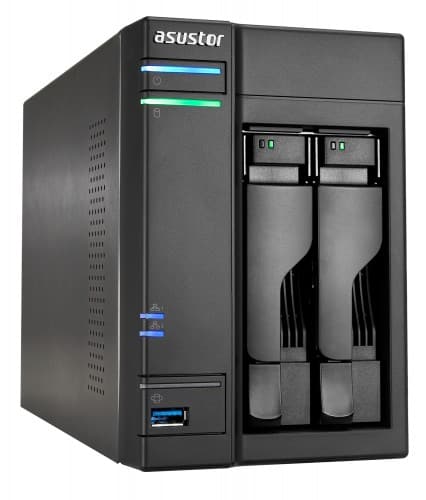SATA-IO announced the development of a new standard that combines SATA software infrastructure with the PCI Express interface and the new technology will allow manufacturers to create devices that can tap into the bandwidth of PCIe slots while remaining compatible with existing SATA applications. The amalgamation will offer an affordable way to provide devices with interface speeds of 8Gb/s and 16Gb/s, a healthy increase over SATA 3.0’s single-channel throughput of 6Gb/s. SATA Express devices are recognized by the host as plain old SATA hardware it’s also more scalable than traditional SATA because SATA-IO can simply tap into more PCIe lanes to boost speed and satisfy higher performance requirements when the time comes……………..
The Serial ATA International Organization (SATA-IO), the industry consortium dedicated to sustaining the quality, integrity and dissemination of Serial ATA (SATA) technology announced it is developing SATA Express , a new specification that combines SATA software infrastructure with the PCI Express interface. SATA Express enables the development of new devices that utilize the PCIe interface and maintain compatibility with existing SATA applications. The technology will provide a cost-effective means to increase device interface speeds to 8Gb/s and 16Gb/s. Solid state (SSDs) and hybrid drives are already pushing the limits of existing storage interfaces. SATA Express will provide a low-cost solution to fully utilize the performance of these devices. Storage devices not requiring the speed of SATA Express will continue to be served by existing SATA technology. The specification will define new device and motherboard connectors that will support both new SATA Express and current SATA devices.
“The SATA Express specification provides SSD and hybrid drive manufacturers the advantages of performance and scalability enabled by PCIe 3.0 – which is available now – and the ubiquity of SATA,” said Mladen Luksic, SATA-IO president. “We expect the SATA Express specification to be completed by the end of 2011.” SanDisk has implemented the new SATA µSSD pecification into its SanDisk iSSD product line of postage stamp-sized embedded SSDs. SATA-IO, an industry consortium dedicated to sustaining the quality, integrity and dissemination of serial ATA (SATA) technology.
The number of media tablets shipped worldwide is expected to grow from 17.8 million units in 2010 to 53.5 million units in 2011. The five-year CAGR (Compound Annual Growth Rate) is 48.5 percent, according to the IDC 1Q11 Media Tablet and eReader Tracker Forecast. These thin, high-performance mobile computing platforms combine sophisticated components in a small physical area, compounding design complexity and driving the need for industry standards. Embedded SSDs offer fast performance in a tiny footprint, making them an attractive solution for all categories of ultrathin devices. The SATA µSSD specification eliminates the module connector from the traditional SATA interface, enabling developers to produce a single-chip SATA implementation for embedded storage applications. Among the first products to implement the new standard, the SanDisk iSSD series is an ideal storage solution for OEMs developing the next generation of thin, powerful mobile computing platforms. “To widely adopt a new component technology, manufacturers need to have confidence in its performance, longevity and cost-effectiveness,” said Jeff Janukowicz, research manager, solid state storage technology, IDC. “Today’s announcement of an industry-wide standardization for embedded SSDs, combined with OEM requirements for size and performance gains in storage, should help propel the market for these tiny, versatile drives.” “Connector-free embedded SSDs allow OEMs to develop a new generation of thin yet powerful tablets and ultrathin notebooks,” said Kevin Conley, senior vice president, client storage solutions, SanDisk. “Initiatives such as the µSSD specification promote the development of new standards for storage solutions that help manufacturers continually refine their end consumer product and drive new industry sectors.”
The SATA µSSD standard-conforming SanDisk iSSD series utilizes a new electrical pin-out that allows SATA delivery using a single ball grid array (BGA) package. The BGA package sits directly on the motherboard, allowing for form factors as small as 16mm x 20mm x 1.2mm (up to 32GB)/1.4mm (for 64GB) and 16mm x 20mm x 1.85mm (for 128GB). The SanDisk iSSD i100 SSD is available in 8 gigabyte (GB)1 to 128GB capacities, offering OEMs a flexible range of storage options. “The market for tablets and ultrathin computing devices continues to grow along with the need for small form factor storage solutions,” said Mladen Luksic, president, SATA-IO. “We are excited to have industry-wide support for the µSSD specification and look forward to seeing many µSSD-based products available in the near future.” Supported by vertical integration and more than 20 years of flash memory innovation, SanDisk SSDs empower global manufacturers to satisfy the growing consumer demand for powerful mobile computing platforms such as tablets and notebooks. SanDisk offers a full range of client PC SSD products, including the U100 SSD for cost-effective performance and customizable form factors, the SanDisk iSSD for OEMs who need an embedded µSSD SATA form factor, and a consumer offering that includes the SanDisk Ultra SSD, which serves as a drop-in replacement for hard disk drives.
SATA-IO also announced a new standard for embedded solid state drives (SSDs). The SATA µSSD specification eliminates the module connector from the traditional SATA Interface, enabling developers to produce a single-chip SATA implementation for embedded storage applications. The µSSD standard offers a high-performance, low-cost, embedded storage solution for mobile computing platforms like ultra-thin laptops. By eliminating the connector the µSSD standard enables the physically smallest SATA implementation to date, making it an ideal solution for embedding storage in small form factor devices. “As tablets and other small computing devices continue to proliferate in the market, the need for scalable small form factor storage solutions rises exponentially,” said Mladen Luksic, SATA-IO president. “µSSD provides a new way to leverage the speed, reliability, and low power requirements of SATA technology in these types of products to enable powerful new computing platforms.”
SATA-IO is also developing interoperability tests for µSSD products that will help ensure devices based on the µSSD standard will be compatible with other µSSD-based products. Products based on the µSSD specification are already available from SanDisk Corporation. Samsung and Toshiba have also expressed support for the standard. The µSSD specification was developed as part of SATA-IO’s continued mission to provide low-cost, high performance storage solutions optimized for a variety of device segments. Since its introduction in 2001, SATA technology has evolved to enable storage options for a number of applications beyond traditional hard disk PC storage. SATA is now implemented in a variety of applications including solid state and optical drives, embedded mobile devices, consumer electronics products and enterprise storage. Flash industry leaders are supportive of the µSSD initiative. SanDisk currently utilizes the new specification in its iSSD integrated storage device, the world’s smallest, fastest 128GB (SATA 6 G/bs) SSD, and other companies are making plans to follow suit.
[ttjad keyword=”portable-hard-drive”]



